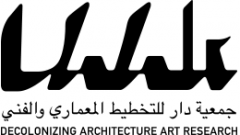Hurting and Healing: Let’s Imagine a Different Heritage (19.3 – 28.8 2022)
This spring’s exhibition at Tensta konsthall poses the following question: How can the understanding of cultural heritage be decolonized by societies and organizations shaped by European knowledge systems? In this project, Charles Esche, director of the Van Abbemuseum and Tensta konsthall engage in dialogue with a number of artworks, artists, researchers and guest curators with the purpose of looking closer at how western-centric perception of cultural heritage can be challenged and redefined.
The exhibition has its origins in Palestine and in a close working relationship between Esche and the artists/architects Sandi Hilal and Alessandro Petti. In their Refugee Heritage, they speculate on what would happen if the Dheisheh refugee camp in Palestine was designated a UNESCO World Heritage Site, and afforded the same status as, say, the Pyramids of Giza, Birka or the Taj Mahal. The installation, which consists of light boxes and photo albums, makes reference to the camp and its relations with the Palestinan villages from which people were driven out in 1948. Dheisheh, created in 1949, can be understood as a permanently temporary society within a stateless nation, existing both in adherence and in contradiction to the UN regulations. By proposing it as something to preserve and nurture, the conditions for how a world heritage site can emerge are shifted for a moment. Can exile take us towards a different understanding of the need for a nation state? What should be preserved once the occupation of Palestine is a historical memory?
From this central question, the exhibition contains a series of works that each present concrete proposals for how new cultural heritage can be imagined, or shift, twist and turn existing perceptions of how the past works in our time and in the future. Several works address the historical colonial exploitation, inequality and devastation caused by global capitalism. As for example Jonas Staal’s documentary images from Rojava, images that depict the process to establish democratic confederalism in the Kurdish area of North Syria, and Taus Makhacheva’s balancing act, in which museum paintings are moved between mountaintops in the Caucasus Mountains by a tight-rope walker, and an installation by Otobong Nkanga addressing the subject of land exploitation in Brazil, Namibia and locally. Also in the exhibition is Renzo Martens & CATPC’s portrayal of a conflict over cultural heritage between a group of artists from the Democratic Republic of Congo and an American museum. The exhibition will also present works by Katarina Pirak Sikku, FCNN, Jeannette Ehlers & La Vaughn Belle, and others, all of which relate to Scandinavia’s colonial past and future.
Participating artists: Brook Andrew, DAAR (Decolonizing Architecture Art Research) Sandi Hilal & Alessandro Petti, Jeannette Ehlers & La Vaughn Belle, FCNN (Feminist Collective with No Name), Edi Hila, Patricia Kaersenhout, Manjot Kaur, Taus Makhacheva, Rabih Mroué, Renzo Martens & CATPC (Cercle d’Art des Travailleurs de Plantation Congolaise), Otobong Nkanga, Katarina Pirak Sikku and Jonas Staal.
Higher seminar and the book launch of Refugee Heritage by DAAR – Sandi Hilal and Alessandro Petti, with a Photographic Dossier by Luca Capuano, May 24, 2–5 pm, 2022 at Tensta konsthall

